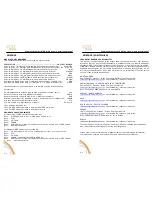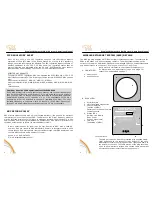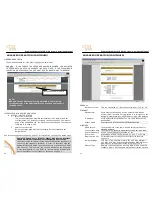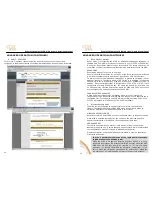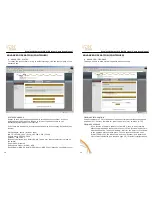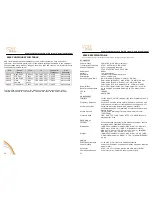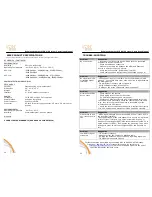
Wireless Ethernet PtP & MP System Operations Manual
ADVANCED OPERATION (CONTINUED)
B.
STATUS – HOST/CLIENT ASSOCIATION LISTS
1.
Single Point and Multipoint Host AP
The “Client List” page of the Host AP (either a Single Point or Multipoint Host)
shows the MAC Address(es) of the paired or grouped Client Subscriber Units (SU)
connected to the Host AP. For point-to-point systems, one MAC will be shown. A
single point Host should not list more than one Client MAC address. However, a
Client may be able to see more than one Host AP. A multipoint Host AP will show
all of the Client SU MAC addresses currently associated. The page will show the
mode, rate and RSSI communication information for each connected Client SU.
2.
Client
The same information is shown on the Client’s “Host AP List”. Other hosts
may appear as the Client searches all available APs on the frequency
band.
12
Wireless Ethernet PtP & MP System Operations Manual
ADVANCED OPERATION (CONTINUED)
C.
STATUS – STATISTICS
The Statistics page is the equivalent of a constant ping without the response time
data. It will indicate the number of transmitted and received data packets versus
the number of dropped or collided packets. As the system continues to run, these
numbers will accumulate until cleared to 0. Refresh to see updated statistics.
ETHERNET STATISTICS
Packet information at the motherboard and cable level. If packets are dropped or
collided at the Ethernet level then there could be a problem with the cabling or
other LAN related hardware.
WIRELESS STATISTICS
Packet information across the wireless link. If packets are dropped at the wireless
level then a new frequency might be suggested. A clearer line of sight or antenna
alignment may be necessary as well.
13
FAQ: What is the Rate indication?
The signaling rate is the speed in megabits per second (Mbps) at which the two
radios are communicating. A max signal rate is 54. If the connection cannot be made
at a max rate, the radios slow down the connection in order to attempt to connect at
a lower rate, such as 48, 42, 36, etc. This rate is a “snapshot” of the speed in Mbps
for the last packet of information as it crossed the wireless link. This is not to be used
as an indication of overall throughput for the wireless connection.
FAQ: What is the RSSI?
The RSSI, or received signal strength indication, is a meter to identify the signal to
noise ratio in a 0-100 format. Any number above 20 is an acceptable link. Further
alignment or channel changes may be necessary to raise the RSSI figure.


